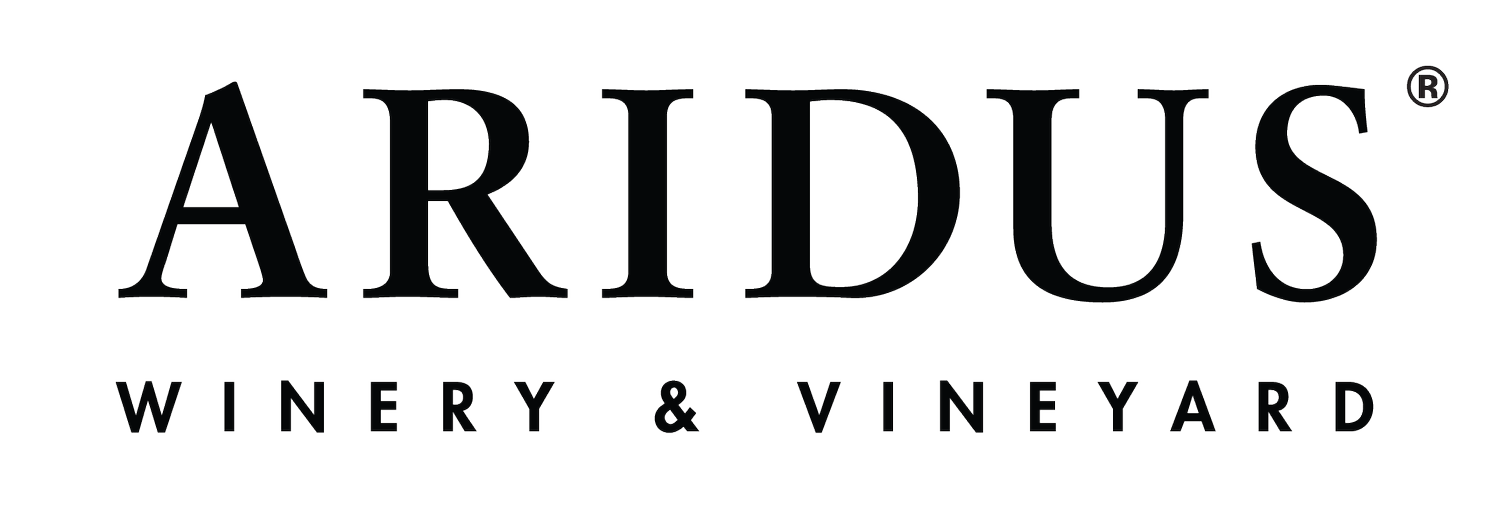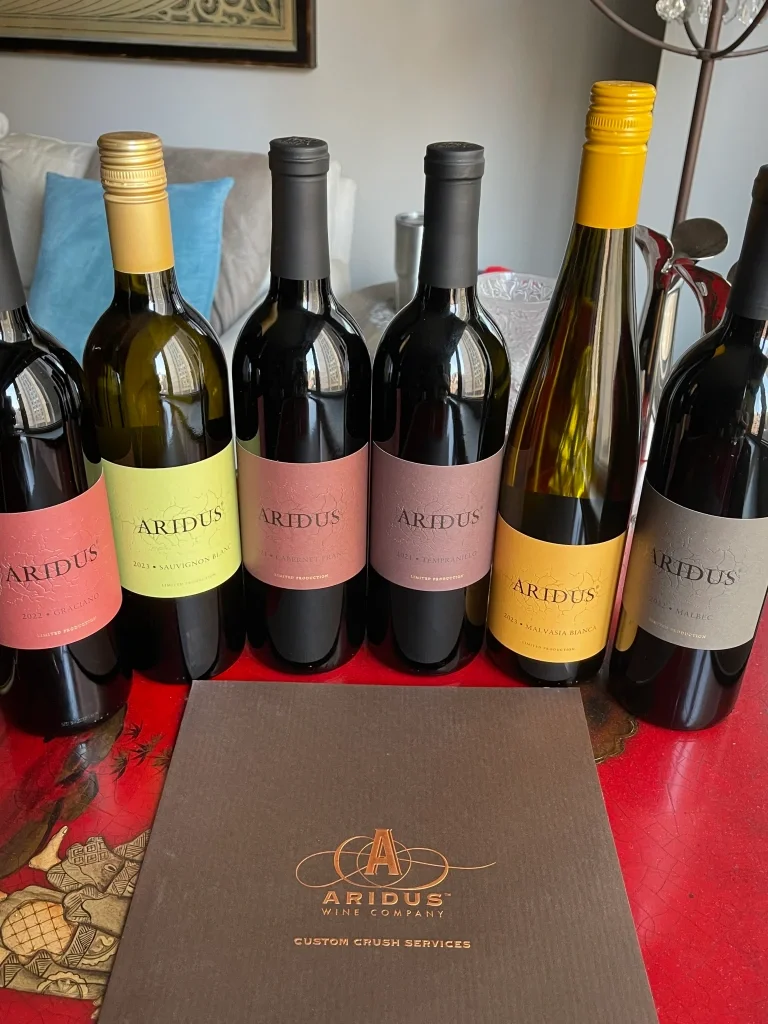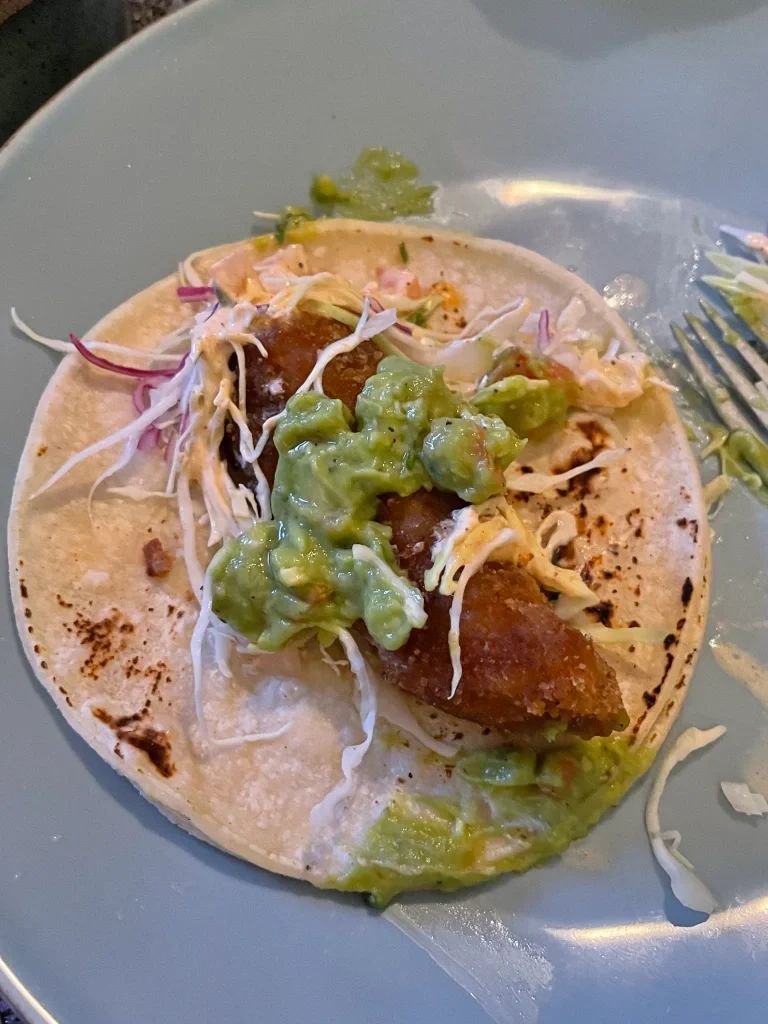Aridus Wine Company: Vinous Gifts from the Arizona Desert
Written by theswirlingdervish
Recently I had the opportunity to taste six wines from Arizona, a completely new adventure for me. And what a pleasure it was! To be honest, I wasn’t going in blind: I’d seen reviews of these wines by other writers, and their observations piqued my interest. But I kept trying to square the positive reviews with the obvious challenges of growing vitis vinifera grapes in a desert climate.
How do they do it?
Over the years, I’ve come to understand that many factors affect the quality of grapes grown in a place and, ultimately, the wines made from them. For example, elevation and aspect can mitigate high temperatures during the growing season, as can proximity to large bodies of water. Soil type matters, too: porous sands drain faster than dense clays; gravelly plots retain heat. It’s not news that winemakers must consider the climate and weather events influencing their vineyards. But I’d never tasted wine from an actual desert, so I was curious.
I had questions . . .
Why Arizona?
Scott Dahmer, the winery’s owner, explains that hot days, cool nights, and minerals in the soil create a unique microclimate that’s suitable for producing high-quality grapes. He compares the climate in southeastern Arizona to that of Argentina, which experiences semi-arid, desert-like conditions, very little rain, and average daytime temperatures ranging from 90-100 degrees. Nights are much cooler, between 40 and 50 degrees, bringing that all-important diurnal shift, which helps grapes retain acidity. Malbec and other Spanish grape varieties have adapted well here, and Dahmer is confident that Arizona will expand its reputation for producing exceptional wines.
After tasting these six bottles, I’d argue that Aridus has made the case.
Insights Into Winemaking at Aridus (Courtesy of Jef Stebben, Winemaker)
Monsoons are a regular occurrence during the growing season. While this would have catastrophic effects in most wine regions, it’s different in the desert. According to Stebben, the heavy rains cool the vineyards and drastically reduce the need for irrigation in an otherwise hot, dry climate. Conversely, the timing and duration of the monsoons may elevate the risk of fungal disease, keeping vineyard workers on high alert:
Our vigilance comes from being constantly aware of the weather and its impact on the vines. Often, we are able to treat mildew and fungus as spot corrections. This limits sprays to the area where the infection occurs, and not a whole vineyard treatment.
Harvest involves multiple passes through the vineyards, ensuring that grapes are picked at optimum ripeness. Some plots are home to different varietal clones that ripen at slightly different times. Often, they’ll be fermented together but sometimes Stebben likes to get creative:
As a winemaker, I like to explore my natural curiosity (translate this as playing with my food.) Many times I use different treatments in the vinification of the grapes. This helps create a diverse range of flavors and aromas, and often it is easiest to keep these as different lots.
The use of non-saccharomyces yeast gives the winemaker options :
With the inclusion of non-saccharomyces yeast, we can use cultures that are reliable and which mimic the character of a “wild fermentation.” Many of these yeasts will out-compete the indigenous cultures while imparting a floral character and creating beneficial enzymes that saccharomyces yeast alone would not be able to achieve. Most of the strains are not alcohol-tolerant and die off very early in the fermentation process. One of the other benefits of these organisms is that they reproduce very quickly. Non-saccharomyces yeasts also take some of the necessary resources and factors that harmful bacteria need, effectively clearing the way for saccharomyces yeast to finish the ferment without competition, and without the use of added chemicals.
Aridus Wine Company focuses on sustainable farming methods:
Sustainable practices are at the heart of our approach, wherein we prioritize the use of organic alternatives whenever possible. Our commitment to sustainable farming methods extends to utilizing drip irrigation systems, which not only conserve water but also enhance efficiency in crop production. By constantly exploring innovative solutions and embracing environmentally friendly techniques, we strive to maintain a harmonious balance between agricultural productivity and the preservation of our precious natural resources.
Tasting the Wines
2023 Aridus Sauvignon Blanc ($40; 13.4% abv; 485 cases produced)
This unique blend (what Aridus calls a “true expression of the high desert”) is dominated by Sauvignon Blanc, with small amounts of Malvasia Bianca and Muscat. It is highly aromatic, with notes of orange flower, ripe peach, and citrus rind. It’s scrumptious but I’d have failed this in a blind tasting, perhaps pegging it as an Albariño from Spain or a white blend from the south of France. Tangy acidity makes for a refreshing sip on its own or with light fare. Flavors reflect the nose, with additional tropical notes of grilled pineapple and lime. #SummerSip!
Food Pairing
Slow-cooker chicken thighs with jalapeño, basil, onion, and pineapple: My version of tacos al pastor, a dish we ate frequently when we lived in Miami. A nice, easy match for a week-night dinner at home.
2023 Aridus Malvasia Bianca ($40; 10.1% abv; 432 cases produced)
100% Malvasia Bianca; 100% stainless steel; 20 g/l residual sugar.
This wine is the product of multiple passes through the vineyards over three days’ time, in a season dominated by monsoons. Grapes were harvested at night, then chilled and pressed the following day.
Pale lemon color. Pronounced aromas of orange flower, honey, melon, musk; it’s almost like a perfume. On the palate it is off-dry with flavors of orange rind, honey, melon, and flowers. The long finish is enticingly floral. There’s a lovely balance between sweetness and acidity, making this the perfect sip for a warm afternoon. It reminded me of my first trip to southern Spain, where I drank similar wines at the local chiringuito on the beach.
Food Pairing
Fish tacos from our favorite Mexican restaurant and a couple of ears of local corn on the cob. Really nice with the tacos; off-the-charts delicious with the sweet corn slathered in butter and sprinkled with salt and pepper. (Note to self: have a few bottles of this wine on hand for next summer’s bounty of corn . . .) Alas, the current vintage is sold out.
2022 Aridus Malbec ($60; 14.9% abv; 393 cases produced)
100% Malbec, this wine is the product of a monsoon season, with cooler temperatures and minimal need for irrigation. It was aged in a mix of two-year-old and neutral barrels for 16 months.
Deep ruby color with aromas of ripe black plum and cherry, grilled meat, and licorice. On the palate, there are medium + tannins and body, with high alcohol. Flavors echo the nose, with notes of cocoa powder and a slight raisined note on the finish. Very smooth texture. A surprisingly delicate Malbec that treads softly on the palate despite its higher alcohol level.
2021 Aridus Tempranillo ($50; 16% abv; 239 cases produced)
Grapes were harvested at night, then destemmed and placed into open vats, where they rested until morning. Fermentation was initiated via a proprietary blend of non-saccharomyces yeasts (mainly T-73 which heightens primary fruit aromas.) See note on the use of non-saccharomyces yeast strains, above. The grapes were pressed after 10 days of skin contact, and the wine settled for eight days, before resting in neutral barrels for 29 months before bottling.
This 100% Tempranillo has a deep purple color. Aromas of black cherry, ripe strawberry, and coffee. It’s warm on the nose, showing its high alcohol level. On the palate there is moderate acidity and it’s not nearly as warm or heavy as the nose suggests; tannins are smooth and well-integrated. Flavors are reflective of the nose, with ripe red fruit, sweet vanilla, and baking spices. It feels light on its feet considering the alcohol level, making it a nice partner with food or for sipping on its own.
2022 Aridus Graciano ($65; 16% abv; 228 cases produced)
This wine is 100% Graciano, a variety well-known in Rioja. Fittingly, the grapes were fermented with a Spanish strain of yeast called Clos, which promotes black and red berry fruit character and helps build stable tannins. The wine was racked into neutral barrels, where it aged for 15 months.
Deep ruby color, like a beautiful ripe cherry. Nose is pronounced: berries, cherries (red and black); later there are sweet floral and herbal notes. The palate reflects the nose and is fresh with medium+ acidity and tannins. Very smooth; easy but not timid. Structural components are in balance. A lovely sip!
Food Pairing
Skirt steak grilled over a bed of summer herbs (rosemary, thyme, parsley.) I’m having flashbacks to Spain again, never a bad thing.
2021 Aridus Cabernet Franc ($65; 13.6% abv; 68 cases produced)
Grapes were destemmed and put into open vats. After 12 days of skin contact, they were pressed and the juice allowed to settle for four days before fermentation was initiated, using BM-45, a yeast native to Italy’s Brunello region. The wine was then transferred to mostly neutral barrels, where it remained for 34 months before bottling.
Deep ruby color. Pronounced aromas of plum, blackberry, and blueberry heightened by menthol/eucalyptus notes. Also, some floral notes (violet) and licorice. On the palate, there is moderate acidity nicely balanced with moderate tannins. Flavors of red and black berries, cocoa powder. Super-fresh and exquisitely balanced. A really lovely wine; my favorite of the bunch.
My Takeaways
Wine geeks grab every opportunity to expand their knowledge, taste new wines, and (of course) share their experiences with anyone who will listen. If you’ve read this far, you know that I’ve thoroughly enjoyed my virtual trip to Wilcox, Arizona, and my Q&A with winemaker Jef Stebben. These wines are the real deal, and I highly recommend tasting them if you have the chance.
Huge thanks to the folks at Aridus Wine Company for sending these samples my way. It’s been a pleasure to taste each of these wines and learn about viticulture in southeastern Arizona. The wine world is truly a marvelous place!



